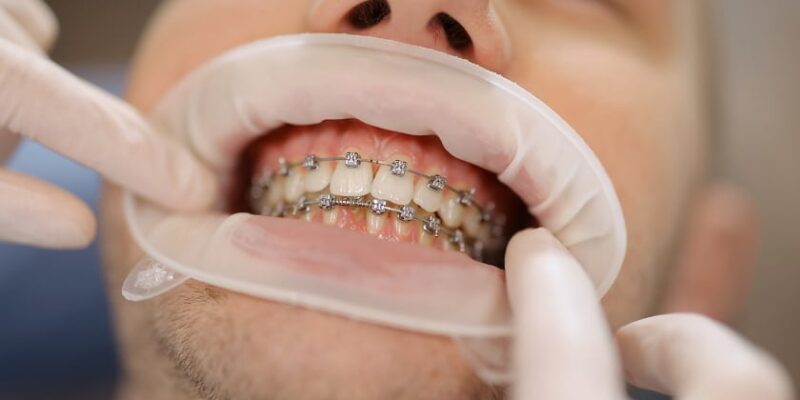Orthodontics, a specialized branch of dentistry, focuses on correcting teeth and jaws that are positioned improperly. For centuries, humans have recognized the importance of a healthy, straight smile, but modern orthodontics has come a long way from its early beginnings.
With today’s advancements, orthodontic treatments not only result in an aesthetically pleasing appearance but also ensure proper function of the teeth and jaw. Proper alignment can make cleaning easier, reduce the risk of tooth decay, and prevent issues related to chewing and speech.
Crooked teeth and teeth that don’t fit together correctly can be harder to maintain, leading to potential oral health concerns. More than just cosmetic fixes, orthodontic treatments can help avoid more serious health problems down the line.
As orthodontics has evolved, a plethora of treatment options have become available, allowing patients to choose solutions tailored to their needs. This guide delves into these options, providing valuable insights for anyone considering orthodontic treatments.
Traditional Braces
Traditional metal braces are the most common type of orthodontic treatment. These consist of metal brackets adhered to each tooth and connected by an archwire. The wire is tightened periodically to shift teeth into their desired positions.
As the mainstay of orthodontics for decades, metal braces have a proven track record. Modern versions are smaller and less noticeable than their predecessors, and some even offer colorful bands for younger patients to customize their appearance.
The duration of treatment with traditional braces can vary based on individual needs but typically ranges from 18 months to 3 years. Regular visits to the orthodontist are required for adjustments.
Despite their visibility, traditional braces are often the most cost-effective solution and can address a wide range of orthodontic issues, from simple to complex.
Invisalign
Invisalign is a series of clear, removable aligners custom-made for each patient’s teeth. They offer a more discreet alternative to traditional braces, being nearly invisible to the naked eye.
These aligners are made of a comfortable plastic material and are designed to be worn for at least 22 hours a day. Every two weeks or so, the patient switches to a new set of aligners, gradually shifting the teeth into their desired positions.
Many dental practices, such as My Dentist San Francisco, have incorporated Invisalign as part of their suite of orthodontic offerings, citing its appeal to adults and teens seeking an inconspicuous option.
While Invisalign is ideal for many, it might not be suitable for correcting severe orthodontic issues. A consultation with an orthodontist can determine if this treatment is right for a particular patient.
Lingual Braces
Lingual braces function similarly to traditional braces but are placed behind the teeth, making them invisible from the front. This offers a cosmetic advantage for those who want the effectiveness of braces without the visible metalwork.
Installing lingual braces requires special expertise, as the process is more intricate than that for traditional braces. The brackets are custom-made for each tooth to ensure an exact fit.
While they are an excellent discreet option, lingual braces might be uncomfortable initially, given their proximity to the tongue. It may also take patients longer to adapt to speaking with them.
Due to their custom nature and the expertise required for placement, lingual braces tend to be more expensive than traditional options.
Retainers and Post-treatment Care
After completing orthodontic treatment, it’s essential to maintain the new tooth position. Retainers are custom-made devices, usually of clear plastic or metal, designed to hold teeth in their corrected positions.
Most orthodontists recommend wearing retainers full-time for a period after treatment, followed by nighttime use indefinitely. This ensures that the teeth don’t drift back to their original positions.
Retainers are typically comfortable and should be cared for by cleaning them regularly and avoiding exposure to extreme heat.
It’s crucial to attend follow-up appointments post-treatment, as the orthodontist can check the retainers’ fit and make adjustments if necessary.
The Orthodontic Process
The first step in the orthodontic process is an initial consultation. During this visit, the orthodontist evaluates the patient’s needs and discusses potential treatment options, costs, and expected durations.
Once a treatment plan is established, the patient will have appointments for the placement of the chosen orthodontic devices, be it braces, aligners, or other appliances. Regular follow-up visits will be scheduled for adjustments and monitoring.
It’s imperative to maintain good oral hygiene throughout the orthodontic process. This includes regular brushing, flossing, and attending dental cleanings to ensure optimal results and avoid complications.
At the end of the treatment, the orthodontic appliances are removed, revealing a newly aligned smile. As mentioned earlier, the use of retainers will then be crucial to maintain the results.
Risks and Considerations
As with any medical procedure, orthodontic treatments come with potential risks. These might include discomfort, tooth decay from inadequate cleaning, or, in rare cases, allergic reactions to the materials used.
Some patients might experience difficulty speaking or chewing after the initial placement of their orthodontic appliances. This usually resolves as one becomes accustomed to the device.
It’s essential to choose a reputable and experienced orthodontist. Properly executed orthodontic treatment not only ensures a desirable outcome but also minimizes potential complications.
Regular check-ups and open communication with the orthodontist can address any concerns and ensure the treatment progresses smoothly.
Cost and Financing
Orthodontic treatments are an investment in one’s oral health and appearance. Costs can vary widely based on the type of treatment, duration, and the specific orthodontist chosen.
Many dental insurance plans partially cover orthodontic treatments, but it’s essential to check individual policies for specifics. Some orthodontists also offer in-house financing or payment plans to make treatments more accessible.
Besides traditional payment methods, Health Savings Accounts (HSAs) and Flexible Spending Accounts (FSAs) can be used to cover orthodontic expenses.
When evaluating the cost, it’s crucial to factor in the long-term benefits of the treatment, including improved oral health, increased self-confidence, and potentially reduced future dental expenses.
Final Thoughts
Orthodontics has opened the door to healthier, more attractive smiles for countless individuals. With the vast array of treatment options available today, patients can find a solution that suits their needs, lifestyle, and budget.
The key to successful orthodontic treatment lies in choosing the right orthodontist, understanding the chosen treatment, and adhering to post-treatment care recommendations.
While the journey might seem daunting, the rewards—a beautiful smile and optimal oral health—are well worth the effort. Those considering orthodontic treatments should arm themselves with knowledge and approach the process with enthusiasm and commitment.
In the end, a straighter smile can boost confidence, improve oral health, and offer a renewed sense of well-being, making the investment in orthodontics a worthy endeavor.










Comments